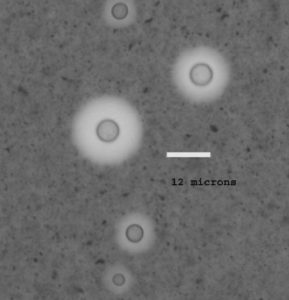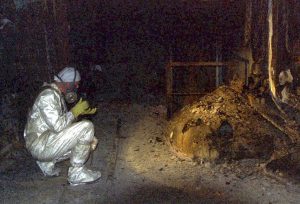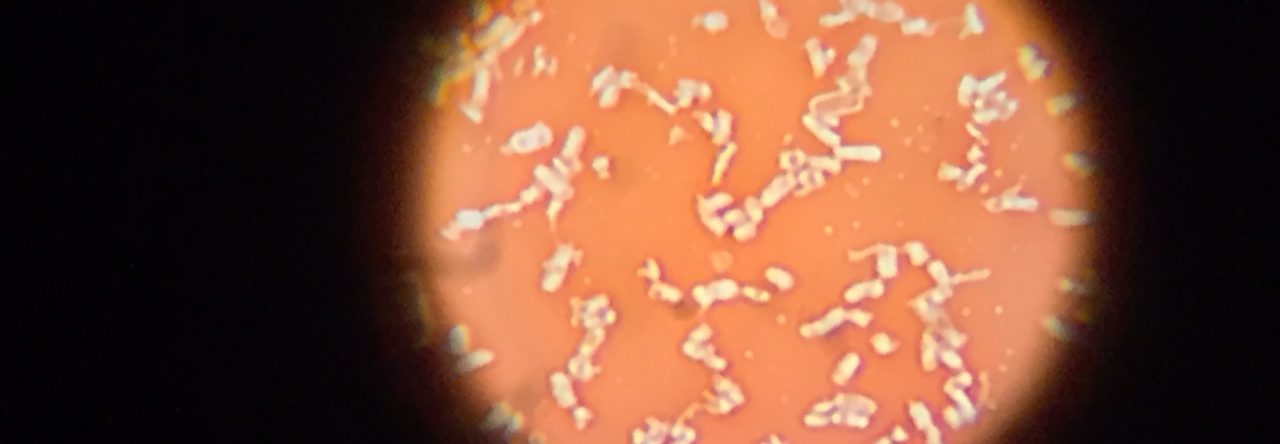Right off the bat, I have good and bad news. The title, outside of being a really bad ripoff of a certain line in a certain movie I shall not name here, is also a game called two truths and a lie. I’ll give you a minute to write down your guesses.
Done?
Good.
First, the bad news– anti rad vodka is not a thing, outside of a series of video games called S.T.A.L.K.E.R. It’s a survival horror FPS that I die in more than organic chem class. It’s also a great atmospheric game set in Pripyat and the nearby Chernobyl power plant. That name should sound familiar. If not, you really should’ve paid more attention to history class, or play more video games. In 1986, Reactor 4 underwent a meltdown, starting a fire and releasing insane amounts of radiation into the atmosphere and rendering the nearby town of Pripyat unlivable– here’s a good site to read up on it.
Of course, this means the part about mushrooms and mutants is true, and not in the typical horror movie sense. Due to the unique selective pressures of high radiation levels and lack of human contact, the plant and wildlife in the area around Chernobyl had to adapt to the land’s new status as, literally, an irradiated wasteland. I’m only going to talk about the radiation eating mushrooms and insane bacteria with nine copies of its genome, but feel free to look up how other critters adapted– I wish I had the time/energy/Diet Coke to cover them all.
To start off, we’ll begin with the rad-eating mushrooms, because mycology still falls under microbiology, and that’s the only thing I’m really good at. I first heard about this some time ago in this National Geographic article covering the discovery of this weird fungi after a robot sent to play inside the Chernobyl reactor. The poor droid in question brought out this:

This is what my new nightmare fuel looks like at the microscopic level. I found it from this paper describing how it uses radiation as a fuel source, and the potential uses for it– including use as, and I can’t believe I’m typing this, astronaut food. Heck, this link outlines SpaceX’s recent drop off of some of this fun lil’ mutant to the International Space Station, so that experiments can begin to determine whether or not this mycolic mystery will be on the menu for space travelers in the near future.
See what I typed there? This is why I stay in the lab. I prefer to experiment with weird stuff, not eat it.
But Kristina, you’re no doubt saying, what’s this other mutant you mentioned in your ripoff title?
I’m getting to that. This stuff takes a while to type, especially when you’re a smart aleck like myself.
Meet the local favorite of microbiologists in my neck of the woods, Deinococcus radiodurans:

This cute lil’ mugshot comes from this site, which gives a brief overview of why this extremeophile could survive the setting for the Mad Max films. To give you an idea of how unkilllable this thing is, it could survive on this:

“This” is the elephant’s foot under Chernobyl’s reactor number 4–a person could stand next to this mass for under 5 minutes and be guaranteed to be dead in less than a week from radiation poisoning. I found this lovely photo here, with some more info on what it is and how it came into being. How does it survive this insane amounts of radiation? Easy. Just have 8 more copies of your genome, and you too could survive crazy levels of rads! Seriously, it has 8 copies of its genome, and really good repair enzymes, capable of repairing the damage a lot more accurately/quickly than our own DNA repairmen. Here’s a more in-depth article describing this unique survival function. Like my new favorite fungi, scientists are looking for ways to use this bug outside the lab. In the paper above, the most commonly talked about way would be using it as a bioremediation tool– a biological way of clearing radiation from uninhabitable areas to make them habitable again. Some other ways it’s being researched, as well as additional info about the bacterium itself, can be found here.
These are only two of the many, many topics I could’ve covered regarding how we can find new avenues of research from unexpected places. I mainly chose to do these because A. Video Game, and B. Personal interest. It’s cool, why not type about it? Meh. If anything in this post interests you, take a look at the links above. If it’s the video game, I’d also recommend the Metro series and the Fallout series– fun, post apocalyptic settings, with some survival horror elements.
Enjoy!

Daniel
Awesome post, it was super fun to read. I think that these organisms are fascinating and it amazes me how fast they can evolve. The Chernobyl disaster was 30 years ago and these organisms have evolved so fast. It kind of makes me wonder what the bigger eukaryoats in the area have done to survive, deca-ploid turtles?
Maggie
Kristina, your humor continues to kill me. I connect with your dry sarcastic tone on a deep level. In accordance with what Daniel has said above, I too find the evolution rate of these organisms to be astonishing… there’s a lot we can learn from them. Maybe in the future, research could exploit the repair mechanisms used by these mutants towards rewriting diseased genomes?
**side-note–You should watch Chernobyl Diaries if you’re looking for a spooky movie to enjoy…
Kathy
You draw us in with some great hooks, and then you also offer plenty of links to allow us to continue investigating your points. But I’m not sure I would ever eat those mushrooms.
Justin
i thought this was a very well written post with just the right about of clever comedy. the fact that this organisms have found a way to adapt to these harsh conditions is fascinating but to do it in such a short amount of time too is crazy. i thought you provided good insightful information and a topic i would of never heard anything about if it had not been for your blog.